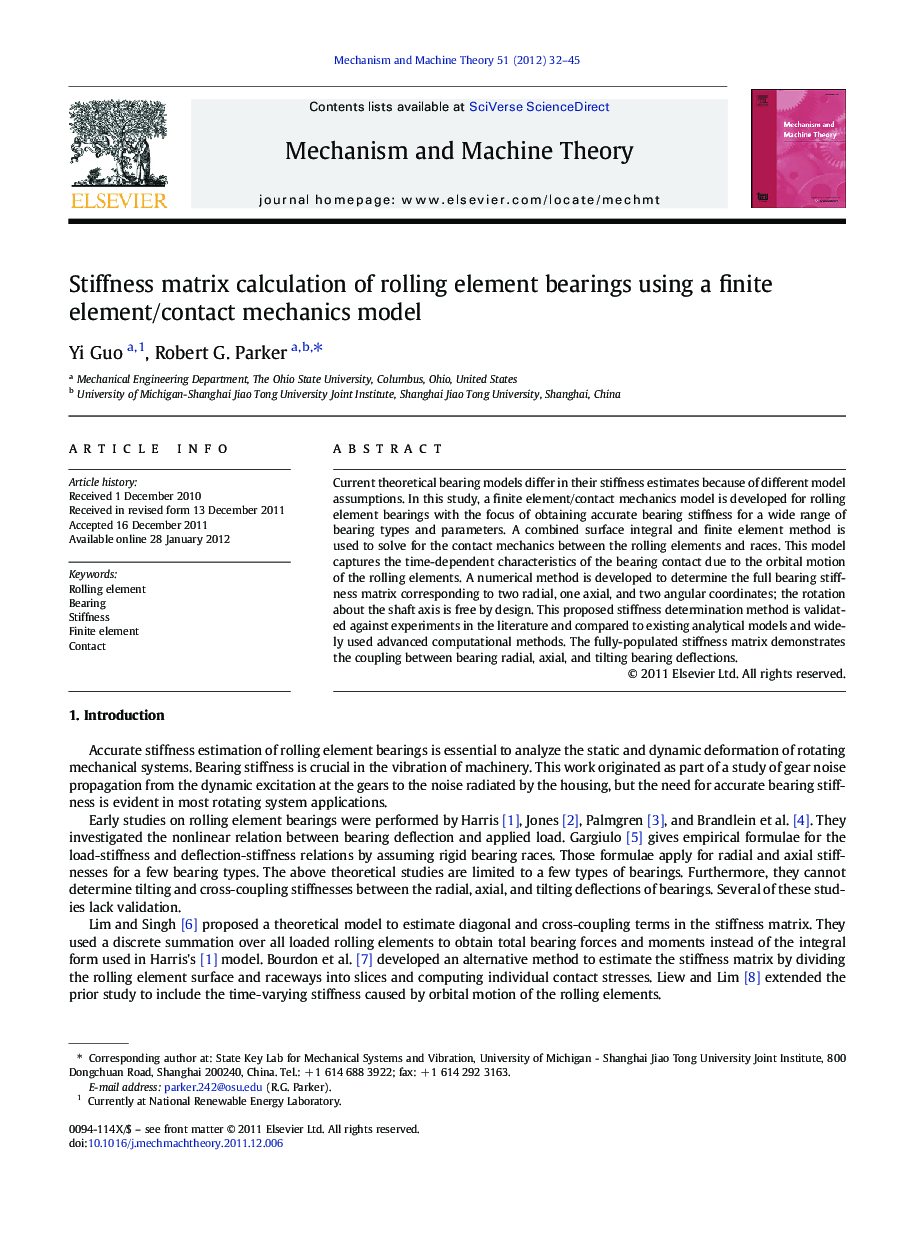| کد مقاله | کد نشریه | سال انتشار | مقاله انگلیسی | نسخه تمام متن |
|---|---|---|---|---|
| 803234 | 1467783 | 2012 | 14 صفحه PDF | دانلود رایگان |

Current theoretical bearing models differ in their stiffness estimates because of different model assumptions. In this study, a finite element/contact mechanics model is developed for rolling element bearings with the focus of obtaining accurate bearing stiffness for a wide range of bearing types and parameters. A combined surface integral and finite element method is used to solve for the contact mechanics between the rolling elements and races. This model captures the time-dependent characteristics of the bearing contact due to the orbital motion of the rolling elements. A numerical method is developed to determine the full bearing stiffness matrix corresponding to two radial, one axial, and two angular coordinates; the rotation about the shaft axis is free by design. This proposed stiffness determination method is validated against experiments in the literature and compared to existing analytical models and widely used advanced computational methods. The fully-populated stiffness matrix demonstrates the coupling between bearing radial, axial, and tilting bearing deflections.
► Establish a finite element/contact mechanics model of rolling element bearings.
► Develop a numerical method to determine fully-populated stiffness matrices.
► Compare the method against experiments, published models, and commercial software.
► Demonstrate significant differences compared to Hertzian contact models.
Journal: Mechanism and Machine Theory - Volume 51, May 2012, Pages 32–45